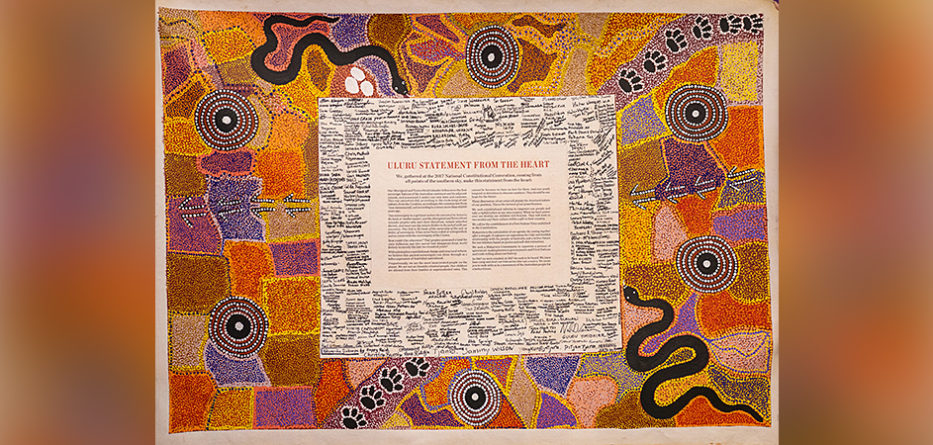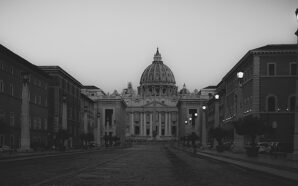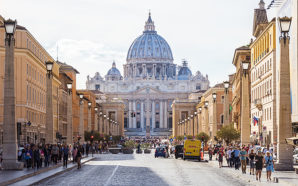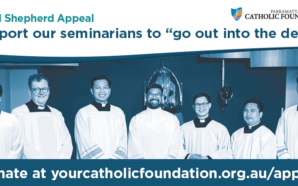Homily for the Fourteenth Sunday in Ordinary Time Year C and for National Aboriginal and Torres Strait Islander Sunday
Readings: Isaiah 66:10-14; Psalm 65(66):1-7, 16, 20; Galatians 6:14-18; Luke 10:1-12, 17-20
3 July 2022
On Sunday, we celebrate Aboriginal and Torres Strait Islander Sunday. The theme for this NAIDOC Week is ‘Get up! Stand Up! Show Up!’ That evening, we commence the Second Assembly of the Plenary Council of our Church which is being asked to endorse the Uluru Statement from the Heart. What might such endorsement mean? What is it that we would be endorsing?
LISTEN: https://soundcloud.com/frank-brennan-6/homily-3722
There has been a lot said about the Uluru Statement in the last month since the election of the Albanese Labor Government. Speaking at my father’s funeral, Senator Patrick Dodson, Special Envoy for Reconciliation and the Implementation of the Uluru Statement from the Heart, said, “Today’s invitation by First Nations ‘to walk with us’ in the Uluru Statement from the Heart holds up to all Australians the need for Voice, Treaty and Truth as the way to redress the tyranny of our indigenous dispossession. Injustice and illegality as the foundational pillars of our nationhood can perhaps be discarded to the wastebasket of history.”
The issue of the moment is Uluru’s call “for the establishment of a First Nations Voice enshrined in the Constitution”. There is no such thing as a small change to the Australian Constitution. That’s why I entitled my book on the topic: No Small Change: The Road to Recognition for Indigenous Australia.[1] As we navigate this difficult space together, Australians of all backgrounds and heritage, we are mindful of Jesus’ words in today’s gospel:
“I am sending you out like lambs among wolves. Carry no purse, no haversack, no sandals. Salute no one on the road. Whatever house you go into, let your first words be, ‘Peace to this house!’”
Back in 2012, Patrick Dodson co-chaired the Expert Panel set up by Prime Minister Gillard to look at the question of constitutional recognition. He and his co-chair Mark Leibler said, “An essential pre-condition to gaining the support needed for a successful referendum is cross-party parliamentary support.”[2] That expert panel which included Indigenous leaders like Marcia Langton, Ken Wyatt, Patrick Dodson, Noel Pearson, and Megan Davis said, “The referendum should only proceed when it is likely to be supported by all major political parties, and a majority of State governments.”[3]
They were surely right when they adopted four principles to guide their assessment of proposals for constitutional recognition of Aboriginal and Torres Strait Islander peoples. They insisted that any proposal must
- contribute to a more unified and reconciled nation;
- be of benefit to and accord with the wishes of Aboriginal and Torres Strait Islander peoples;
- be capable of being supported by an overwhelming majority of Australians from across the political and social spectrums; and
- be technically and legally sound.[4]
They thought there should be a new provision in the Constitution:
- Recognising that the continent and its islands now known as Australia were first occupied by Aboriginal and Torres Strait Islander peoples;
- Acknowledging the continuing relationship of Aboriginal and Torres Strait Islander peoples with their traditional lands and waters;
- Respecting the continuing cultures, languages and heritage of Aboriginal and Torres Strait Islander peoples[5]
Five years later, after the Uluru meeting, the Turnbull Government set up the Referendum Council which once again included a stellar line up of Indigenous leaders including Pat Anderson, Megan Davis, Tanya Hosch, Noel Pearson, and Galarrwuy Yunupingu. For some time, Patrick Dodson, Mick Gooda and Stan Grant also served on the Council.
The Referendum Council abandoned the call for words of recognition being placed in the Constitution. Following the lead from Uluru, they confined their focus to the Voice, recommending:
“That a referendum be held to provide in the Australian Constitution for a representative body that gives Aboriginal and Torres Strait Islander First Nations a Voice to the Commonwealth Parliament. One of the specific functions of such a body, to be set out in legislation outside the Constitution, should include the function of monitoring the use of the heads of power in section 51 (26) and section 122. The body will recognise the status of Aboriginal and Torres Strait Islander peoples as the first peoples of Australia.”[6]
They went on to recommend: “That an extra-constitutional Declaration of Recognition be enacted by legislation passed by all Australian Parliaments, ideally on the same day, to articulate a symbolic statement of recognition to unify Australians.”[7]
Eighteen months later, three of the key leaders from Uluru, Pat Anderson, Megan Davis and Noel Pearson proposed to a parliamentary committee that there be a First Nations Voice to present its views to government as well as to the Parliament. This was a significant change. They also proposed that the Voice be able to present Indigenous views not just on proposed laws made under ss 51(26) and 122 but on all “matters relating to Aboriginal and Torres Strait Islander peoples”.[8]
Eight months after these Indigenous leaders put their submission to Parliament, Murray Gleeson who had been Chief Justice of Australia and a member of the Referendum Council said: “It is difficult to see any objection in principle to the creation of a body to advise Parliament about proposed laws relating to Indigenous affairs, and specifically about special laws enacted under the race power which, in its practical operation, is now a power to make laws about Indigenous people.”[9] But note he was speaking about a body with a far more confined purpose than that now being proposed by the key advocates from Uluru.
Gleeson also sounded a salutary warning note: “I think it very likely that Australians, and Parliament itself, would want to see what the body looks like, and hear what the Voice sounds like, before they vote on it”.[10]
The Morrison Government set up a Senior Advisory Group to advise on the co-design of the Voice. The Group was chaired by Indigenous Leaders Marcia Langton and Tom Calma who said: “The national voice would provide advice to both the Australian parliament and government. This is important because it allows the national voice to engage fully with laws and policies at different stages of development. This dual advice function reflects the different roles of government and parliament in making laws and policies.”[11]
The Senior Advisory Group (of which I was a member) reported that the National Voice would be “an advisory body to the Australian parliament and government. These relationships would be two-way interactions with either party able to initiate advice or commence discussion around relevant policy matters”. The Senior Advisory Group insisted that the National Voice “would not have a service delivery function or manage Australian government funding or programmes.”[12]
So, there are many issues that need to be resolved as we seek a way forward realising the promise of the Uluru Statement. All voters need to know what the body will look like and what the Voice will sound like. Should the new representative body which will be the Voice be primarily a voice to Parliament or a voice both to Parliament and to Government? Should this body be primarily concerned with the scrutiny of proposed laws specific to Aborigines and Torres Strait Islanders – laws on topics such as land rights and cultural heritage? Or should it be charged with the monitoring of all laws and policies which affect Aborigines and Torres Strait Islanders – laws and policies on matters such as education, health, taxation and welfare reform? Would that not include most if not all laws and policies made by Parliament and Government? Remember, for example, that the government is already committed to “a First Nations foreign policy that weaves the voices and practices of the world’s oldest continuing culture into the way we talk to the world, and the work of the Department of Foreign Affairs and Trade (DFAT)”[13].
These are all legitimate questions in light of the various suggestions which have been put by a variety of Indigenous leaders over the last 10 years.
One thing is certain. There will be no point in the Labor Government proceeding with a referendum unless and until all major political parties in our Parliament are agreed on the shape and scope of the Voice. If in any doubt about that, just remind yourself that the Labor Party has made 25 attempts to amend the Constitution since federation, and they have failed on 24 of those occasions. Anyone who voted in the one successful Labor referendum is now over 97 years of age.
Let’s be respectful of each other as we seek clarification of these questions and as we do the hard work of getting up, standing up, and showing up so that injustice and illegality as the foundational pillars of our nationhood can be discarded to the wastebasket of history. This will be no small change.
‘Get up! Stand Up! Show Up!’ Endorsing the Uluru Statement from the Heart, we may need to heed the words of Jesus to his disciples: “Whenever you enter a town and they do not make you welcome, go out into the streets and say, ‘We wipe off the very dust of your town that clings to our feet, and leave it with you. Yet be sure of this: the Kingdom of God is near.’”
Fr Frank Brennan SJ is the Rector of Newman College, Melbourne, and the former CEO of Catholic Social Services Australia (CSSA). He has been appointed a peritus at the Fifth Plenary Council of the Australian Catholic Church.
[1] Frank Brennan, No Small Change, University of Queensland Press, 2015
[2] Report of the Expert Panel, Recognising Aboriginal and Torres Strait Islander Peoples in the Constitution, 2012, p. v.
[3] Ibid, p. 227
[4] Ibid, p. 4
[5] Ibid, p. 230
[6] Final Report of the Referendum Council, 30 June 2017, p. 2. Section 51(26) allows the Commonwealth Parliament to make laws with respect to the people of any race for whom it is deemed necessary to make special laws. Section 122 allows the Commonwealth Parliament to make laws for the government of any territory surrendered by any State to the Commonwealth.
[7] Ibid.
[8] Pat Anderson, Noel Pearson, Megan Davis et al., Joint Select Committee on Constitutional Recognition relating to Aboriginal and Torres Strait Islander Peoples, Submission 479, 3 November 2018, p. 6
[9] Murray Gleeson, Recognition in Keeping with the Constitution: A Worthwhile Project, Uphold and Recognise, 2019, p. 12
[10] Ibid.
[11] Indigenous Voice Co-Design Process, Final Report to the Australian Government, July 2021, p. 11
[12] Ibid, p. 109
[13] ‘Labor’s First Nations foreign policy looks like real, substantive change’, Canberra Times, 28 Mary 2022, available at https://www.canberratimes.com.au/story/7756003/labors-first-nations-foreign-policy-promises-real-change/








